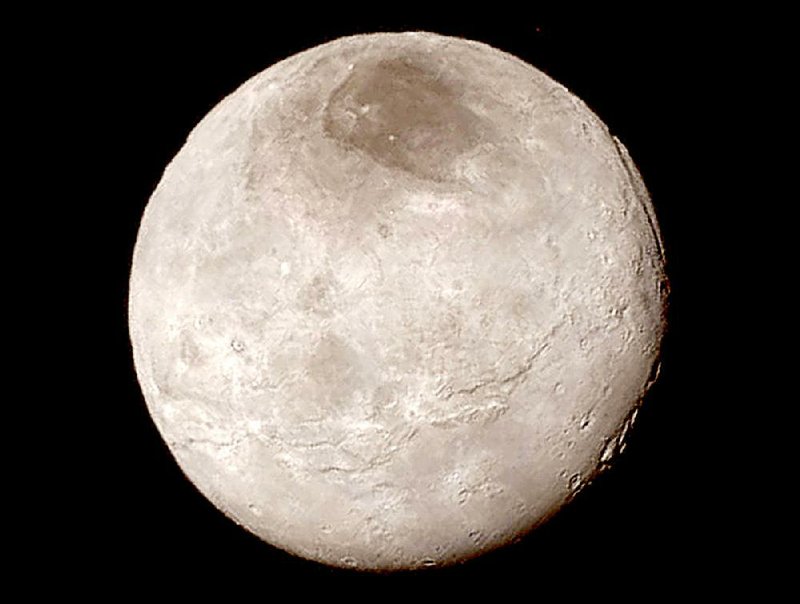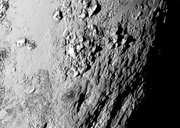CAPE CANAVERAL, Fla. -- Scientists on Wednesday released the first ever up-close images of Pluto and its big moon, Charon.
The pictures showed ice mountains on Pluto about as high as the Rockies and chasms on Charon that appeared to be six times deeper than the Grand Canyon.
Especially astonishing to scientists was the absence of impact craters in a zoom-in shot of one rugged slice of Pluto. They said that suggests that Pluto is geologically active and is being sculpted not by collisions with cosmic debris but by its internal heat.
The long-awaited images were unveiled in Laurel, Md., home to mission operations for NASA's New Horizons, the unmanned spacecraft that made a history-making flyby visit to the dwarf planet Tuesday after a journey of 9½ years and 3 billion miles.
"I don't think any one of us could have imagined that it was this good of a toy store," principal scientist Alan Stern said at a news conference. "I think the whole system is amazing. ... The Pluto system is something wonderful."
Added Lowell Observatory's Will Grundy: "This is what we came for."
"This exceeds what we came for," corrected deputy project scientist Cathy Olkin.
Stern and his team named a bright heart-shaped area discovered on the surface of Pluto the Tombaugh Reggio, in honor of American astronomer Clyde Tombaugh, who spied the frozen, faraway world on the edge of the solar system in 1930.
The zoom-in of Pluto, showing an approximately 150-mile area of the planet, reveals a mountain range about 11,000 feet high and tens of miles wide. Scientists said the peaks -- seemingly formed from Pluto's icy bedrock -- appeared to be about 100 million years old. Pluto itself is 4.5 billion years old, they said.
"Who would have supposed that there were ice mountains?" project scientist Hal Weaver said. "It's just blowing my mind."
Spencer called it "just astonishing" that the first close-up picture of Pluto didn't have a single impact crater on it. Stern noted that the findings suggesting a geologically active interior are going to "send a lot of geophysicists back to the drawing boards."
The heat that appears to be shaping Pluto may be coming from the decay of radioactive material normally found in planetary bodies, the scientists said. Or it could be coming from energy released by the gradual freezing of an underground ocean.
As for Charon, about half the size of Pluto, its canyons look to be 3 miles to 6 miles deep and are part of a cluster of troughs and cliffs stretching 600 miles, or about twice the length of the Grand Canyon, scientists said.
The Charon photo was taken Monday. The Pluto picture was shot 1½ hours before the spacecraft's moment of closest approach Tuesday. New Horizons swept to within 7,700 miles of Pluto during its flyby. It is now 1 million miles beyond it.
Up until this week, the best pictures of Pluto were taken by the Hubble Telescope, and they were blurry, pixelated images.
Scientists promised even better pictures Friday.
A Section on 07/16/2015


